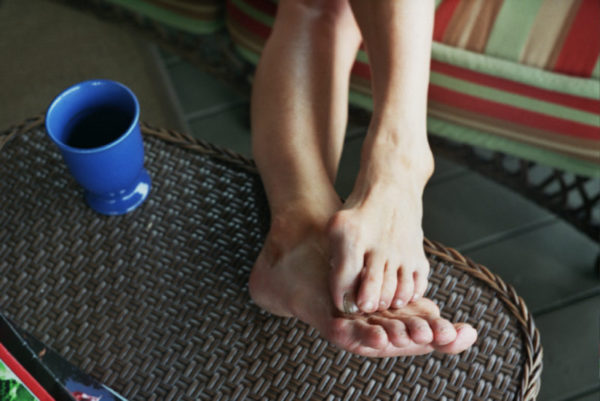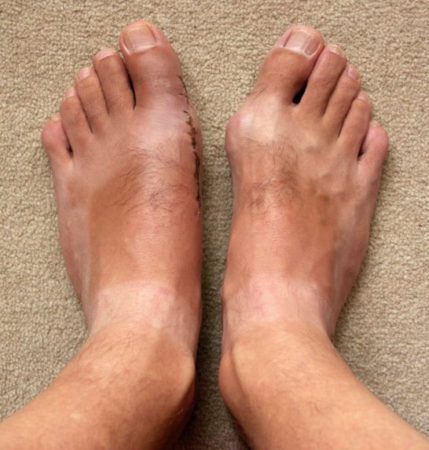
Photo credit: fortinbras via Visualhunt.com / CC BY-NC-SA
What are bunions?
A bunion is a bony bump or deformity in the joint at the base of the big toe. The bone in the foot below the joint points outward and the bone in the toe points inward, toward the other toes.
Usually, bunions don’t hurt. “There are many patients who have pretty severe deformities but claim no pain and there are some who don’t have a substantial deformity but yet have a lot of pain,” Dr. Michael Saraydarian told me. He’s a podiatrist at Central Maine Orthopaedics in Auburn, Maine,
Do tight shoes cause bunions?
Dr. Saraydarian says tight shoes alone don’t usually create bunions. “They can inspire more symptoms, but they don’t usually cause them,” he said. “I can show you young children who have bunion deformities. It’s not just a bump, it’s an angular deformity of two bones.”
Bunions tend to run in families and are more common in women, although men can develop them, too. Low arches, flat feet or loose joints and tendons may increase your risk. Wearing high heels probably won’t do you any favors because they push your weight forward, which forces your toes into the front of the shoes. Occupations that require a lot of walking or standing may make you more susceptible. So can pregnancy, because hormonal changes loosen your ligaments and flatten your feet. Finally, people with arthritis are prone to developing bunions because it damages the cartilage in the joint.
How are bunions treated?
There really is no conservative cure, said Dr. Saraydarian, but there are conservative treatments. “Basically, conservative treatment is one of accommodation,” he explained, “living with it.”
He offered these suggestions:
- Wear shoes with a wider toe box
- Wear softer shoes or special pads/inserts
- Wear a spacer between your big and second toe
- Tape your toe
- Apply ice
- Try cortisone injections.

Photo credit: Badly Drawn Dad via VisualHunt / CC BY-NC
What about bunion surgery?
As with any surgery, it’s important to weigh the pros and cons. The biggest reason people decide to have bunion surgery (bunionectomy) is that they’re in pain and it’s limiting their everyday activities. In other cases, the deformity is so severe, it’s difficult to wear shoes. Another reason to consider surgery is that over time, bunions can lead to other foot problems, including hammertoes, bursitis, and pain in the ball of your foot.
For the most part, bunion surgery involves shaving the excess bone on the outside of the foot and realigning the joint. In most cases, you get a walking boot in three to four days. “But some are very complex and require no weight on them for six to eight weeks,” said Dr. Saraydarian. “It really depends on how big the deformity is and where the correction needs to be achieved.”
You’ll find more information about bunions and bunion surgery from the American Academy of Orthopaedic Surgeons or the American Podiatric Medical Association.

Leave A Comment